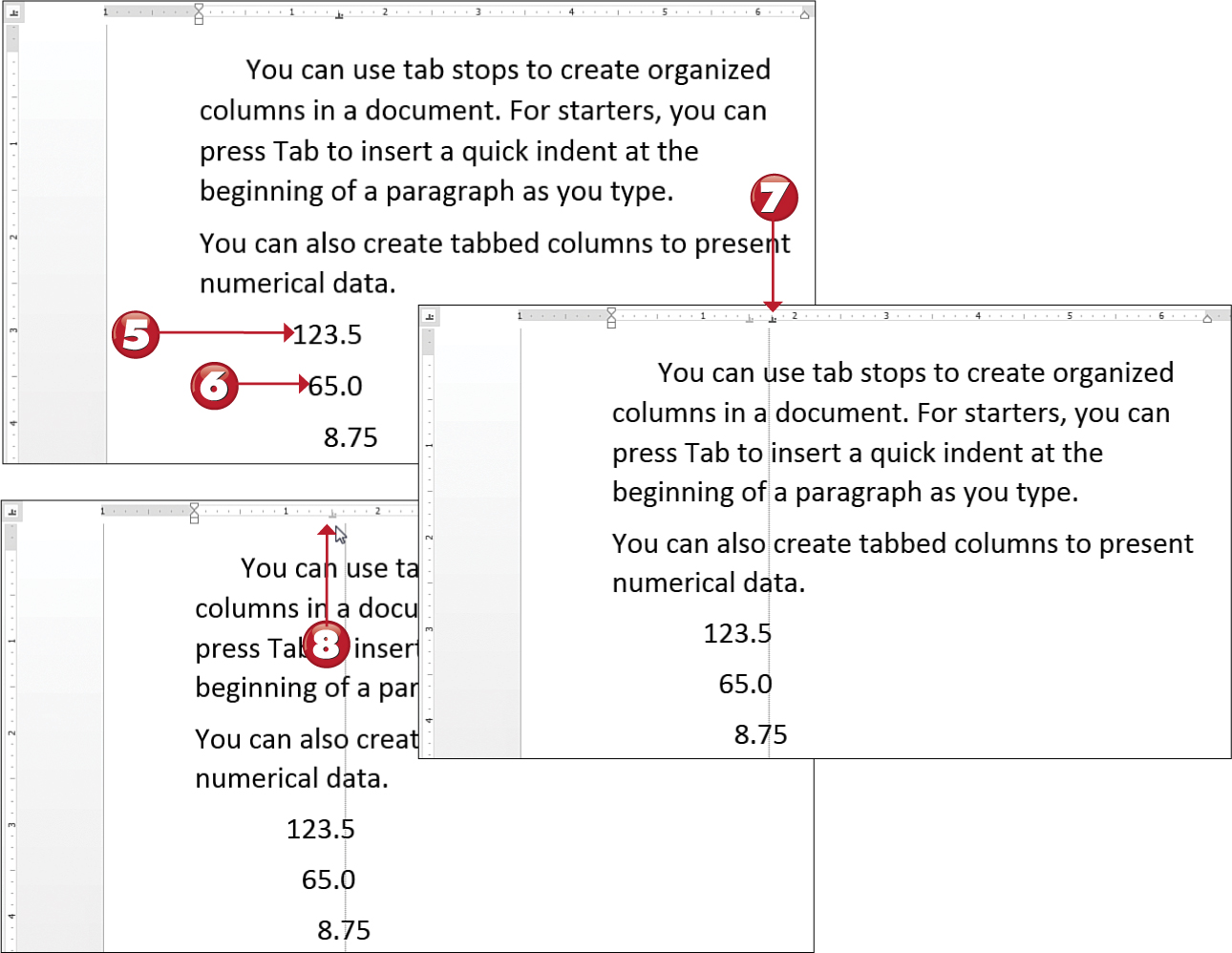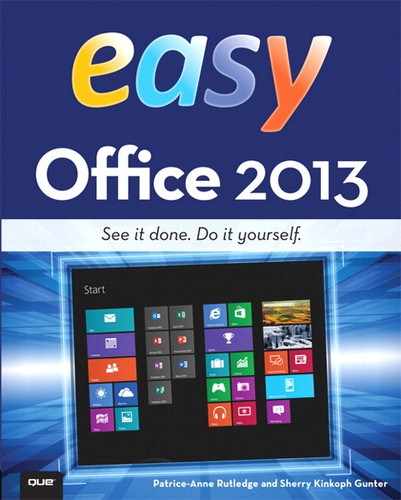Setting Tabs
You can use tab stops to line up text in a document or create columns for organized lists. Word’s tabs indent text by one-half an inch. You can use a default tab stop simply by pressing the Tab key. To define your own tab stops, you can use Word’s ruler.

![]() Click the View tab.
Click the View tab.
![]() Click the Ruler check box.
Click the Ruler check box.
![]() Click the Tab icon box to find the type of tab you want to set. Keep clicking to view all the different tab types: Left, Center, Right, Decimal, and Bar.
Click the Tab icon box to find the type of tab you want to set. Keep clicking to view all the different tab types: Left, Center, Right, Decimal, and Bar.
![]() Click the Ruler where you want to add a tab stop.
Click the Ruler where you want to add a tab stop.

 Tip
Tip
Tabs Dialog Box You can also define your own tab stops using the Tabs dialog box. To find your way there, click the Paragraph icon in the Paragraph group of controls on the Ribbon’s Home tab. This opens the Paragraph dialog box. Click the Tabs button to open the Tabs dialog box where you can add and edit tab stops, set tab stop alignments, and specify special tab leader characters.
![]() Continue adding as many tab stops as you need and entering your tabbed text. In this example, a Decimal tab is applied, causing all the decimal points to line up in a column.
Continue adding as many tab stops as you need and entering your tabbed text. In this example, a Decimal tab is applied, causing all the decimal points to line up in a column.
![]() To move a tab, drag it to a new location on the ruler.
To move a tab, drag it to a new location on the ruler.
![]() To remove a tab stop, drag it off the ruler.
To remove a tab stop, drag it off the ruler.


 Note
Note
Leader Characters Leader characters are simply characters that appear between tab stops. Dots, for example, are a common character used, or a dash or solid line. Leader characters extend from one tabbed column to the next, filling in the extra space between columns. You can set leader characters through the Tabs dialog box; click the Paragraph icon in the corner of the Paragraph tools on the Home tab and then click the Tabs button.
